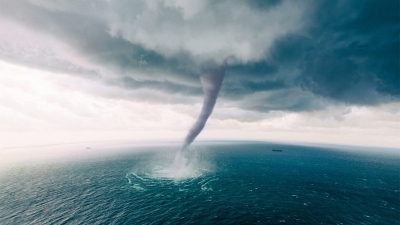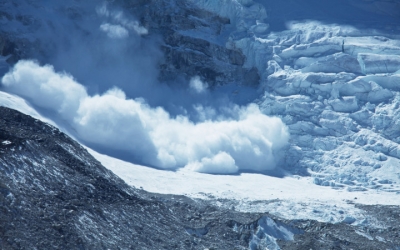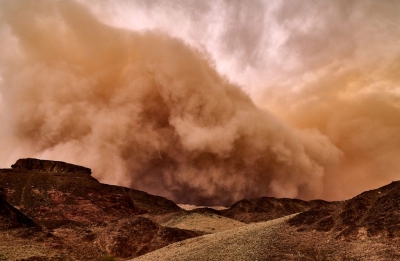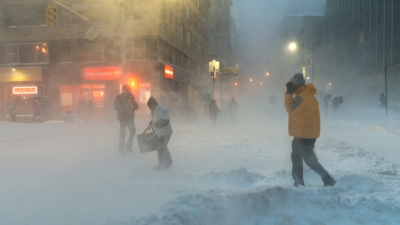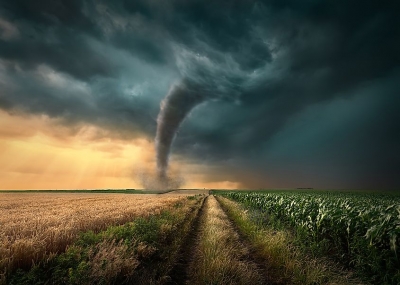
A tornado is a violently rotating column of air that extends from a thunderstorm to the ground. It's often portended by a dark, greenish sky. Black storm clouds gather. Baseball-size hail may fall. A funnel suddenly appears, as though descending from a cloud. The funnel hits the ground and roars forward with a sound like that of a freight train approaching. The tornado tears up everything in its path.
Every U.S. state has experienced twisters, but Texas holds the record: an annual average of 120. Tornadoes have been reported in Great Britain, India, Argentina, and other countries, but they are most often seen in the United States.
Related to tornadoes, waterspouts are weak twisters that form over warm water. They sometimes move inland and become tornadoes.
Dust devils are small, rapidly rotating columns of air that are made visible by the dust and dirt they pick up. Dust devils are not associated with thunderstorms. Either are fire tornadoes, which can spawn from wildfires.
The most violent tornadoes come from supercells, large thunderstorms that have winds already in rotation. About one in a thousand storms becomes a supercell, and one in five or six supercells spawns off a tornado.
Tornadoes can occur at any time of year, but they are more common during a distinct season that begins in early spring for the states along the Gulf of Mexico. The season follows the jet stream—as it swings farther north, so does tornado activity. May generally has more tornadoes than any other month, but April's twisters are sometimes more violent. Farther north, tornadoes tend to be more common later in summer.
Although they can occur at any time of the day or night, most tornadoes form in the late afternoon. By this time the sun has heated the ground and the atmosphere enough to produce thunderstorms.
Tornadoes form when warm, humid air collides with cold, dry air.
The denser cold air is pushed over the warm air, usually producing thunderstorms. The warm air rises through the colder air, causing an updraft. The updraft will begin to rotate if winds vary sharply in speed or direction.
As the rotating updraft, called a mesocycle, draws in more warm air from the moving thunderstorm, its rotation speed increases. Cool air fed by the jet stream, a strong band of wind in the atmosphere, provides even more energy.
Water droplets from the mesocyclone's moist air form a funnel cloud. The funnel continues to grow and eventually it descends from the cloud. When it touches the ground, it becomes a tornado.
Credit : National Geographic
Picture Credit : Google
